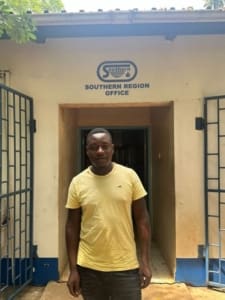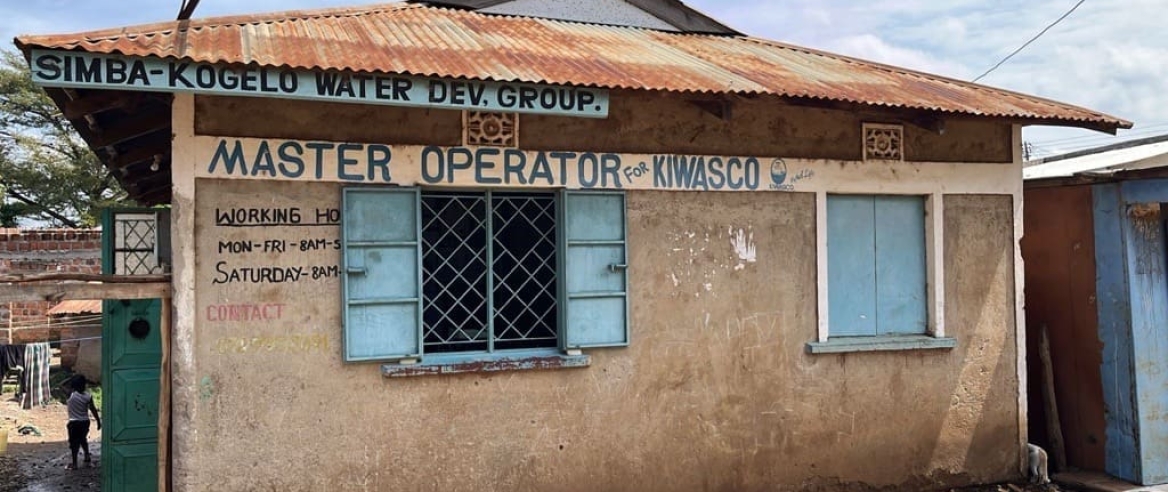The challenge is clear. Despite decades of investment totalling billions of dollars from donors and governments, the world continues to fall behind on Sustainable Development Goal 6: Ensure availability and sustainable management of water and sanitation for all. According to the Joint Monitoring Programme (JMP) 2025 report, 2.1 billion people still lack access to safely managed drinking water and 3.4 billion people still lack safely managed sanitation.
Limitations of Infrastructure Expansion
A key challenge is that infrastructure-driven expansion of piped water and sewerage services may not keep up with population growth, especially in rapidly urbanizing regions, as developing this infrastructure is expensive and takes years for most public utilities in low-resource settings.
There is a growing realization that we will not meet SDG 6 without involving and formalizing the local private sector – the water vendors, emptiers, and small-scale entrepreneurs already serving the last-mile informally across low- and middle-income countries.
A utility manager from Kenya noted: “In Homa Bay, it wasn’t a multimillion-dollar utility project that replaced unsafe lake water, it was the recognition of informal vendors who were already serving the community.”
Yet most efforts to formalize these providers remain experimental, with limited evidence on what works. Three critical questions persist:
- Why formalize? What are the costs and benefits?
- Can providers be regulated for quality and affordability?
- How do we operationalize and scale this approach?
Over the last 10 years, FSG has conducted in-depth action research of private sector water and sanitation integration models from ~25 cities and towns in Sub-Saharan Africa and Asia that have been experimenting with this approach, from large public-private partnerships (PPPs) to localized delegated management models with water vendors. These represent a goldmine of micro-innovations and a real-world test of these concerns.
The models in each city look different, the private sector actors vary significantly, and implementation is complex. But these service delivery models are working and present a viable and feasible alternative to piped systems.
The evidence points to three critical advantages of this approach.
The Value of Formalizing Local Private Providers
Advantage 1: The expansion of safer services to traditionally underserved populations
Most formalized providers readily embraced safety standards and did not perceive them as a burden or compliance cost due to the outweighed benefit of getting the formal status.
For example, in Homa Bay, Kenya, we saw vendors moving away from procuring lake water once the public utility recognized them as formal vendors and provided bulk utility-treated water directly to their settlements. The case for compliance is even stronger for emptying services. Emptiers preferred following safety practices as they reduced injuries and brought dignity to their work. These providers will often reduce their prices once they are formalized and will stick to tariffs if they are mandated.

Importantly, these providers are reaching populations in dense settlements and peri-urban areas that have been excluded from formal public services for years, if not decades.
Advantage 2: Households prefer these services over public alternatives
Formalized private providers offer the local accessibility and responsiveness that households value most, often outweighing cost considerations, contrary to popular belief.
Households consistently cited convenience as the key factor – having service providers close to their homes rather than having to engage with distant utility offices. Customer satisfaction scores remained consistently high for private providers, even when their prices exceeded utility rates (such as in Homa Bay) or when public services were available (like in Maputo). In addition to convenience, a key factor driving satisfaction was reduced, predictable pricing.
In some cases, price reduction was dramatic. In one of the formalization models in Kenya, water prices dropped by up to 90% post-formalization—from USD $7.67 to $0.85 per cubic meter—while becoming predictable rather than varying by vendor or season.
Advantage 3: Implementation is faster and cheaper than expanding piped systems
Private providers bear operational costs and bring existing local assets (such as community relationships), requiring utilities only to provide coordination and quality oversight rather than full service delivery infrastructure and customer management. For fecal sludge management (FSM) in particular, utilities often lack the technical expertise for this relatively new service area and may not even be willing to see themselves as on-site sanitation providers, making experienced local providers invaluable partners.
In general, private provider formalization takes 1-2 years versus 5+ years for infrastructure. More critically, our research shows utilities can serve 3-4x more people per dollar invested through private sector partnerships.
A utility Director from Zambia explained: “In this utility, many people see themselves as engineers. We prefer working on sewerage. We don’t see on-site sanitation as part of our job. That is why we need the private emptiers.”
How to enable private sector integration at scale?
Private sector integration has worked where it has been tried. However, most efforts remain experimental and fragmented. The sector’s current approach focuses heavily on building national regulatory frameworks while expecting utilities to implement these models as a side activity rather than a core service offering.
FSG’s cross-city analysis reveals why most efforts remain experimental: the sector fundamentally misunderstands how private sector integration should be approached. Our research identifies two critical paradigm shifts required to move from isolated pilots to systematic adoption at scale.
Shift 1: From national frameworks to micro-market solutions
Currently, national regulators provide broad frameworks without guidance for local adaptation. But each settlement within a city has unique customer needs, existing provider capacity, market dynamics, and local political economy to navigate.
Utilities need to understand what households value most, assess existing provider capabilities and pricing, navigate the local political economy, and design models accordingly. It means strategically determining which settlements are best served by piped infrastructure, which by formalized private providers, and which type of private sector model fits each context. This requires toolkits for market analysis and model selection rather than one-size-fits-all approaches.
Shift 2: From side activity to dedicated business vertical
Currently, utilities treat private sector integration as additional work for existing staff rather than a distinct business function. But this work requires different skills – partnership management, contract design, market development – and dedicated resources. Utilities need specialized staffing, clear business case development, and scaling strategies to make these models viable and sustainable.
A utility leader in Zambia noted: “We engaged emptiers as it allows us to experiment with a model and partner with providers that are willing to work in FSM. However, there is no department or dedicated staff to manage these services, and setting up one internally would require going through a lot of red tape.”
Getting to Scale: Roles for Key Stakeholders
Enabling these paradigm shifts requires coordinated action from three key stakeholders.
National Regulators:
- Provide utilities with practical tools for analysing local markets instead of broad policy frameworks to enable the choice of which settlements need piped networks versus private providers.
- Establish performance measures that recognize that different service models work for different settlements within a city/ town.
- Work with utilities to navigate the local political economy to build buy-in for this approach with other implementing authorities (e.g., county governments).
Public Utilities:
- Consider different service delivery models for different settlements when designing the long-term plan for achieving coverage within a city/ town.
- Treat private sector integration models as a distinct business line, with separate budgets and revenue tracking to make these services financially viable.
- Build skills required for private sector integration, such as partnership management and contract design, not just technical engineering.
Donor-Funded Programs:
- Fund and/ or conduct market assessments to understand which models best serve which settlements.
- Invest in supporting utilities with navigating the local political economy to ensure that they overcome resistance and sustainably continue private sector models.
- Support utilities to design and implement distinct business models for private sector integration, with clear pathways to scale and viability.
The Path Forward
Our experience shows that formal partnerships with local WASH providers can serve three to four times more people per dollar invested than traditional infrastructure approaches, deliver services in one to two years instead of five or more, and achieve dramatic improvements in affordability and accessibility
If we want to truly improve services for the underserved, we must shift the current narrative and recognize the private sector as part of the solution.





